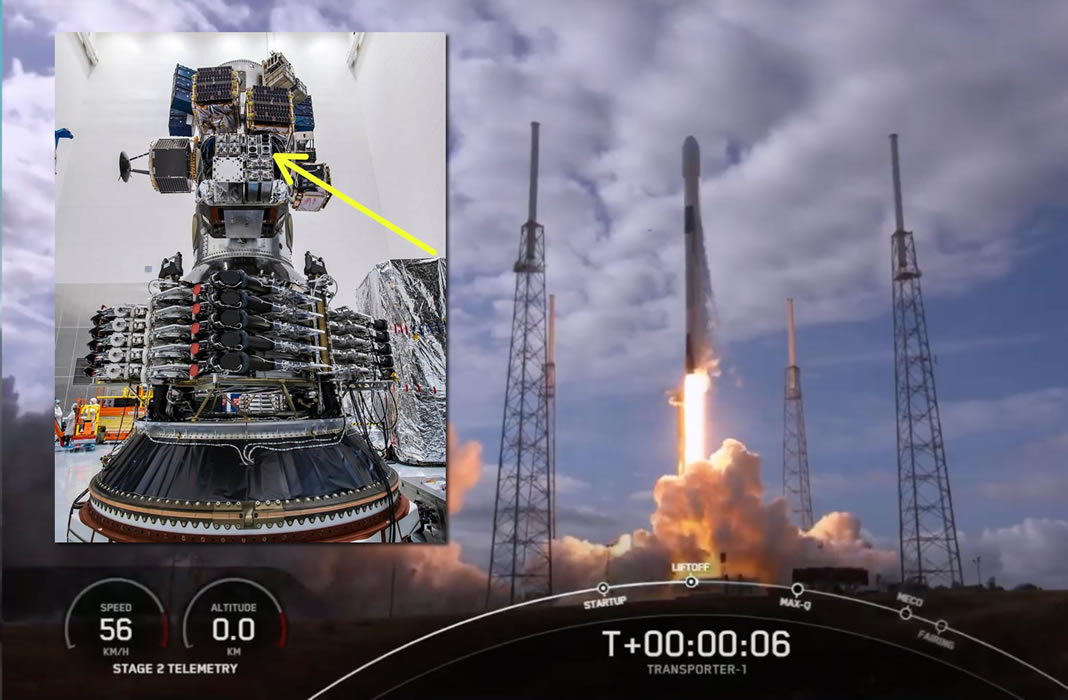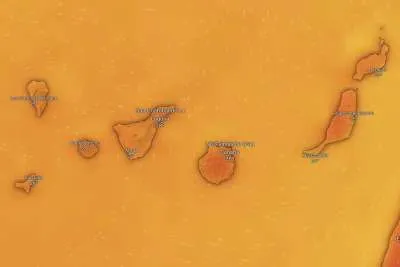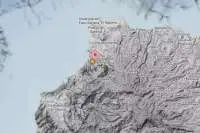Space X launches 'made in Tenerife’ Drago infrared camera into space
- 25-01-2021
- Tenerife
- Canarian Weekly
Yesterday afternoon the Drago infrared camera, developed by the Iactec-Espacio team of the Instituto de Astrofísica de Canarias based at the La Laguna Technology Park, was successfully launched into space aboard a Falcon 9 rocket from Space X. The so-called Transporter-1 mission was able to take off smoothly in the early hours of the launch window, which started at 3:00pm from platform 40 of the Cape Canaveral Space Centre in Florida.
Although the launch has been postponed since Thursday due to unfavourable weather conditions, the Drago project team followed each of the scheduled countdowns with nervousness and enthusiasm from the Iactec headquarters, in the new La Laguna Science Park. During this time, representatives of the Cabildo passed through the launch monitoring room, which was set up in the building. Members of the Teidesat group from the University of La Laguna also collaborated in the live broadcast of the event on YouTube.
For Rafael Rebolo, director of the IAC, "this technological desk will allow us to tackle in the short term, thanks to the planned funding from the Ministry of Science and Innovation, the construction in Iactec of a higher-performance microsatellites that will promote this technological sector in the Canary Islands".
Drago, an acronym for Demonstrator of Remote Analysis of Ground Observations , is the first instrument developed entirely in Iactec-Space, and it is a short-wave infrared space camera for Earth observation. Once in orbit and after commissioning the satellite and its instrumentation, Drago will be able to simultaneously obtain infrared images of our planet at two wavelengths in the SWIR range (1.1 and 1.6 microns).
The camera also includes high-performance hardware and software elements in order to obtain high-speed images (up to 160 frames per second). This electronics would even allow on-board processing of captured images, including features such as super resolution, compression, and encryption.
With a weight of one kilogram and a consumption of 6 watts, comparable to a common led bulb, Drago is already a benchmark in the emerging NewSpace sector that is shaping a new economy based on the so-called democratization of space. For Álex Oscoz, principal investigator at Iactec-Espacio, “the technical details of this camera, both in hardware and software, make it a pioneering development that will make a revolutionary tool available to the NewSpace industry to obtain infrared information from space, with a minimum size, weight and energy consumption”.
Iactec plans to carry out demonstration and validation operations in orbit in coordination with D-Orbit. The camera will take infrared images of the Canary Islands, as well as other parts of the planet, to test its use in different Earth observation applications. "Among the many applications of this technology, which allows to show phenomenology and physical properties not accessible to the eye, is contributing to achieve such important challenges today, such as fighting forest fires or protecting the environment against the effects derived from climate change”, said José Alonso, manager of Iactec-Espacio.
One of the most important milestones achieved with Drago has been the integration of the instrument in a satellite platform such as ION. For this, an innovative plug-and-play approach has been used, incorporating the camera into a standardized CubeSat structure that connects to the electrical and data interface of the satellite carrier. This system significantly reduces the time and cost to prepare and fly a payload on a demonstration mission, and simplifies its operation.
Other articles that may interest you...
Trending
Most Read Articles
Featured Videos
A Vision of Elvis Tenerife Promo
- 10-05-2025
Tenerife Travel Guide
- 13-12-2024
Live webcam from Lanzarote airport
- 13-12-2024





























































